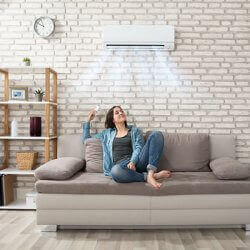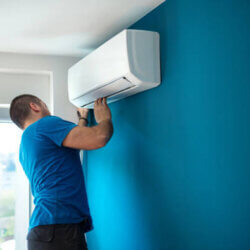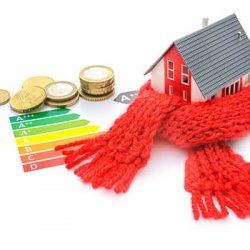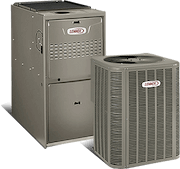We all know the feeling: you come home from a long day in the heat, and you just want to relax in the air conditioning. But sometimes, no matter how low you set the temperature, your AC just can’t seem to keep up. This can be frustrating, but it is important to remember that the AC does have its limits. Do you know what the maximum AC cooling is that your air conditioning can achieve?
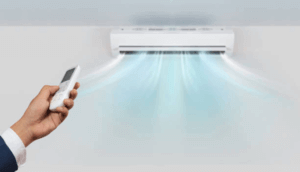
To know the maximum AC cooling capacity, it is important to know what “temperature differential” means, what setting you should use on your thermostat, and how the size of the unit influences AC cooling.
Read on to learn more about these factors that affect how much cooling your AC can provide. To learn more or schedule maintenance to ensure your system is running at peak efficiency, contact the heating and air conditioning experts at Galmiche & Sons today.
Understanding Temperature Differential
The temperature differential is the maximum temperature difference that the AC can create. In other words, it is the difference between the temperature inside and the temperature outside. The temperature differential is usually between 20 and 30 degrees. So if it is 100 degrees outside, the AC might be able to cool the air inside to 70 degrees.
Note that the larger the temperature differential, the harder the AC has to work to cool the air inside. If the temperature differential is too large, the AC will shut down to prevent damage.
However, the temperature differential can be affected by a number of factors apart from the temperature outside. These factors include the air conditioner sizing and the humidity level.
The Ideal Thermostat Setting for Maximum AC Cooling
The lowest thermostat setting for an air conditioner is typically 60 degrees Fahrenheit. On the warmest summer days in St. Louis, the average temperatures hover between 95 to 98 degrees.
Considering a 20-degree temperature differential, the AC cooling will be limited to 78 degrees, which is a recommended level to optimize energy efficiency and comfort. If you set the thermostat any lower than about 78 degrees, the air conditioner will likely not be able to maintain that temperature.
Getting the Air Conditioner Sizing Right
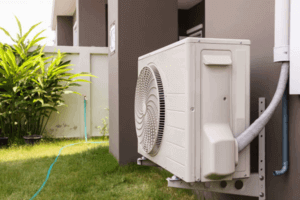
Sizing also plays in important role in how much your AC can cool. A unit that is too large or too small for your home will not operate efficiently, and can even lead to comfort problems.
The size of your air conditioner is measured in tons and is typically referred to as the “tonnage” of the unit. A “ton” of air conditioning capacity is equivalent to 12,000 BTUs per hour. So, for example, a 3-ton air conditioner can remove 36,000 BTUs of heat from your home in an hour.
According to Energy Star, you will need 20 to 30 BTUs of capacity per square foot. So, if your room measures 300 square feet, you need about 7,000 BTUs. You will need less cooling capacity if you optimize insulation and have shaded rooms.
Maximize Your AC Cooling Capacity
It is important to know how much cooling your air conditioner can actually do so that you can make sure you are getting the most out of it. If you set your system way below a recommended temperature, it can just result in higher temperatures, higher energy bill, and even possible breakdown.
As the leading St. Louis HVAC professionals, we at Galmiche & Sons can help with air conditioner sizing and preventive maintenance to maximize AC cooling capacity. Give us a call if your AC is not able to cool your home sufficiently despite following the tips we have given here to maximize cooling.



